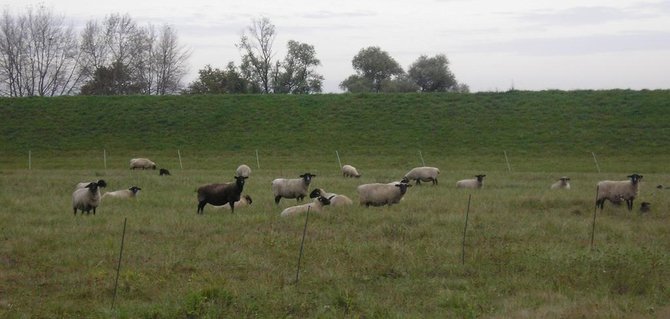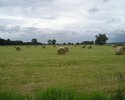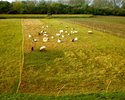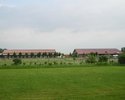Agricultural use
The aim was the implementation of a non-intensive agricultural utilisation system which on one hand allows the farmers to gain a decent income and at the same time enables long-term maintenance of the newly restored species-rich meadows.
In order to establish this agricultural utilisation system local farmers were included from the very beginning of the project.
- An initial road show with local farmers and representatives of farming administration was arranged to provide information about the project.
- This road show was followed by additional meetings and excursions with interested farmers and farming representatives.
- All the operations in the course of the project (cutting, loading, transport and disposal of the plant-material, mulching) were conducted by local farmers, thus helping to increase the acceptance of the project among the farmers. Apart from that it´s the cheapest and most efficient way.
Circumstances in Riedstadt are supporting as there is a high and long-term demand for late-cut hay to feed horses. The species-rich hay from the floodplain meadows has a good fodder-quality. Furthermore, a local shepherd is in need of pastures and hay, too, so that we are able to install a manifold utilisation system and explore its effects on the new floodplain meadows.
This includes:
- Meadows, one to two cuts (depending on the growth of the meadows and the time in between the cuts. In order to enhance the target species and their spreading out it is crucial that they can develop ripe seeds. Due to the warm climate and the long vegetation period in the project area, it is possible for most of the species to produce ripe seeds, either before or after the first cut. If there is a first cut in June, the second cut should not occur before mid-september. Generally we can say that the management system can be rather flexible, as long as there is a regular communication between the project managers and the farmers.)
- Meadows, one cut with aftermath grazing (sheep)
- Pastures (for sheep), potentially with aftermath / mulching
Usually the regular agricultural use starts two or three years after the restoration measures. In the first two or three years the restoration sites are only mulched once a year in late summer, in order to enhance the development of the target species.





